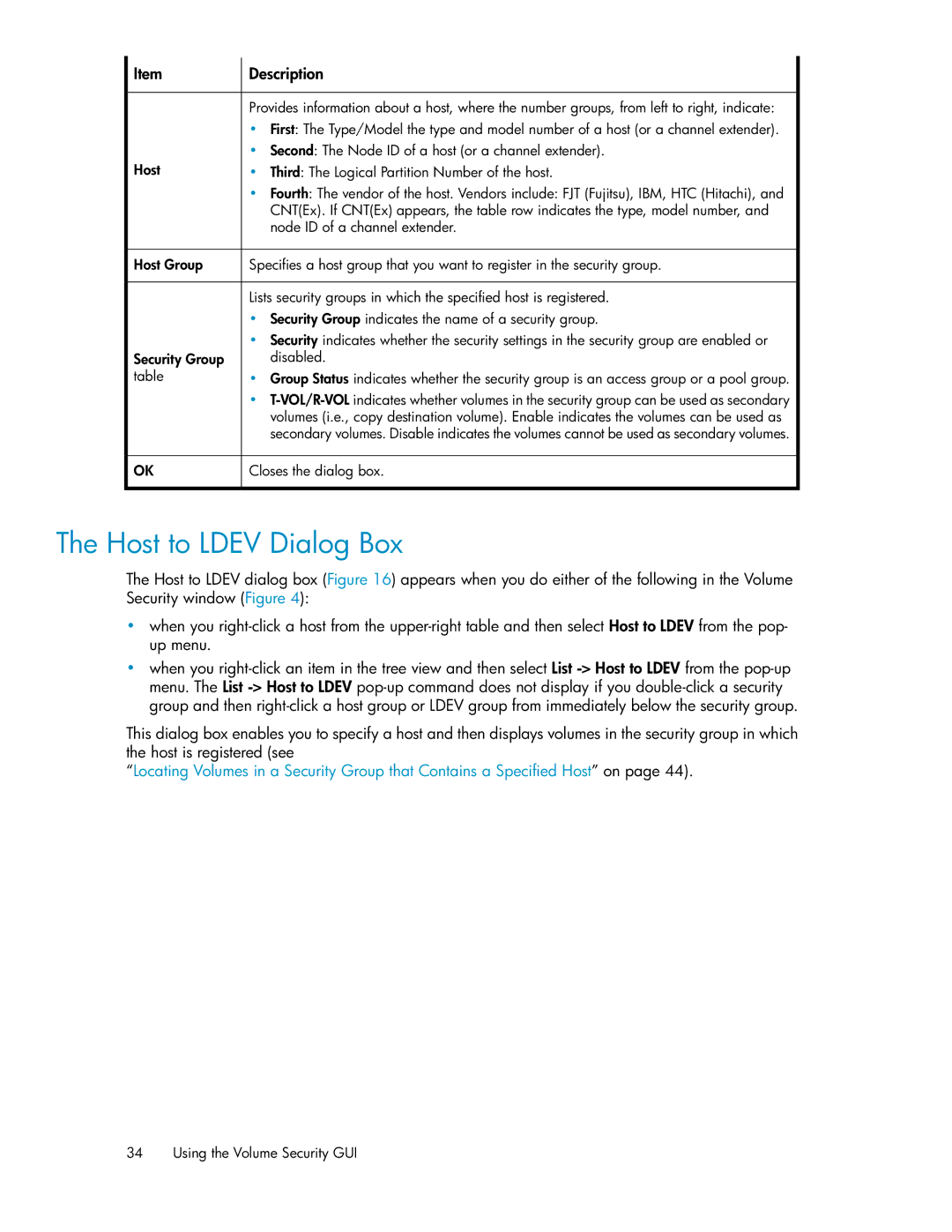
![]() Item
Item
Host
![]() Host Group
Host Group
Security Group table
![]() OK
OK
![]() Description
Description
Provides information about a host, where the number groups, from left to right, indicate:
•First: The Type/Model the type and model number of a host (or a channel extender).
•Second: The Node ID of a host (or a channel extender).
•Third: The Logical Partition Number of the host.
•Fourth: The vendor of the host. Vendors include: FJT (Fujitsu), IBM, HTC (Hitachi), and CNT(Ex). If CNT(Ex) appears, the table row indicates the type, model number, and node ID of a channel extender.
![]() Specifies a host group that you want to register in the security group. Lists security groups in which the specified host is registered.
Specifies a host group that you want to register in the security group. Lists security groups in which the specified host is registered.
•Security Group indicates the name of a security group.
•Security indicates whether the security settings in the security group are enabled or disabled.
•Group Status indicates whether the security group is an access group or a pool group.
•
![]() Closes the dialog box.
Closes the dialog box.
The Host to LDEV Dialog Box
The Host to LDEV dialog box (Figure 16) appears when you do either of the following in the Volume Security window (Figure 4):
•when you
•when you
This dialog box enables you to specify a host and then displays volumes in the security group in which the host is registered (see
“Locating Volumes in a Security Group that Contains a Specified Host” on page 44).
34 Using the Volume Security GUI
